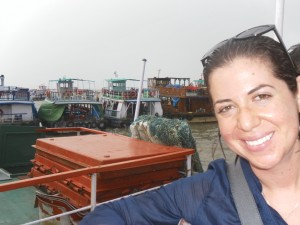To honor Valentine’s Day and again trot out one of my most beloved essays from ye olde blogge of yore, I share this inspirational and TRUE story…
What Would Josephine Do?
(originally published online 10/01/07)
Josephine was one big dating “don’t.”
She pushed too hard. She clung too tight. She regularly chewed her anus.
Josephine was a bitch – literally. 100% female dog.
If you don’t count the carnival fish or science class hermit crabs, Josephine was my only pet, the lone animal to capture my heart. Worms captured her heart, but that’s another story.
When it comes to matters of the heart, Josephine actually had a lot to teach. I didn’t appreciate this at the time, but now that I’m older and infinitely wiser, I can see Josephine for what she really was:
A love goddess.
It’s true. Don’t be fooled by the fact that she used to snarf her own turds – nothing more than a crafty ruse to throw us off-track.
Clever girl.
Josephine educated by example, both negative and positive.
NEGATIVE: Josephine used to bully us into giving up physical affection. She’d whine. She’d squeal. She’d bash me with her head, applying snout-as-lever force in order to send my hand arcing through the air and landing limply atop her head. Oh, how I’d dread her approach. Oh, how I’d bruise like a peach.
What’s the lesson in all of this? First, keep your elbows above muzzle level and always protect your extremities. Second, violence is no way to win love.
Today, when I find myself yearning for creature comfort (and know a non-blood relation who might consider giving it), Josephine’s teachings form the cornerstone of my strategy. I sideline my “grabby snout.” I put myself in my (hypothetical) boyfriend’s shoes by reflecting on what I would have appreciated: A reasonably worded rubdown request; a few upfront tit-for-tat pats. If Josephine had treated me with respect, I would’ve happily scratched behind her ears, and felt like a sweetheart instead of a servant.
POSITIVE: Josephine’s loyalty was limitless. True, her protective instincts could err on the side of excess. For example, there was the time that Josephine scared the neighbor’s dog so profoundly, it channeled its agitation by popping one of its eyeballs from the socket. The eyeball dangled free for a couple of hours, but that’s not the point.
The point is, if you look past that unfortunate incident, you’ll glimpse a lifetime of steadfast devotion.
Here’s the lesson: Get your crew’s back and show ’em some love. In this era of multi-tasking and compartmentalizing, time and love are increasingly rare. Basic supply and demand, my friends —being rare makes them valuable. So don’t skip out on the socializing or skimp on the sentiment. Josephine never did.
During her later years, arthritis in her hips made stair-climbing difficult. Dad built her a ramp, complete with carpet squares and wooden braces. During her later years, incontinence made bladder control impossible. Dad built her a dog house, complete with supplementary space heater. Josephine never used the ramp, though, and she never ventured into the dog house. Why?
“Because she was dumb” would’ve been my answer several years ago. But now that I’ve uncovered Josephine’s love goddess identity, I’ve changed my tune. Maybe she rejected the ramp because she was eager to accompany us and the ramp would’ve slowed her down. Maybe she bypassed the dog house because she wanted to watch us and the dog house would’ve limited her vision.
Or maybe she was dumb.
Regardless, the lesson we can derive is still a valuable one: Love your loved ones, and then love ‘em some more.
It’s been five years since Josephine died. Gone are the fur clumps that used to choke the staircase cracks. Gone are the neon yellow stains she leaked onto my carpet and my carpet alone.
But the heart’s a funny thing. Every time I walk through my parents’ door, I still brace myself for Josephine, inwardly cringing as I anticipate her full-on knee-rush, paint-peeling breath blast, room-clearing fart gas…
For nothing. Because Josephine is gone.
So I hang up my jacket in the vacuum of eerie silence, breathe in the scent of antiseptic cleanliness, and am always, unaccountably, disappointed.
Now I’m on my own, looking for love in this brave new world. As I negotiate the perils of online and face-to-freak dating— trashing misspelled come-ons from middle-aged foreigners, meeting up with bleary-eyed belchers for a cup of 7-11 Big Brew—I find I’m at a loss. How should I act?, I wonder. What should I do?
That’s when I intone my trusty mantra: WWJD, What Would Josephine Do? And I act according to her enlightened example.
So maybe I am still “single” and without a “prospect” between “here” and “Kingdom Come.” But I swear, it’s not because of interpersonal incompetence. Thanks to the love goddess, my dating deeds are not one big “don’t.”
And someday, they’ll end in “I do.”




